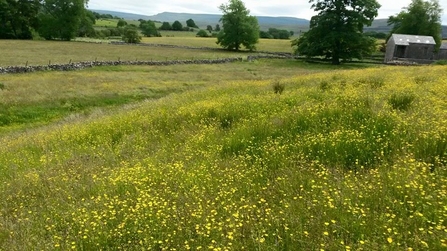
Meadow survey 2015
Following on from the plug planting we did in early summer for the Meadow Life project, surveying of all the meadows then needed to be undertaken to monitor progress. I went out several times with Project Officer Brendan who was very patient whilst I learnt the basic species and I thoroughly enjoyed the surveying process. We had some beautiful weather and some very soggy weather but it didn’t stop us and I’m now feeling much more confident identifying hay meadow species. I practise as much as I can and have joined the Wildflower Society and begun keeping a record book which is a great way of recording everything I’ve seen and making sure I make the effort to key out any species I don’t recognise.





